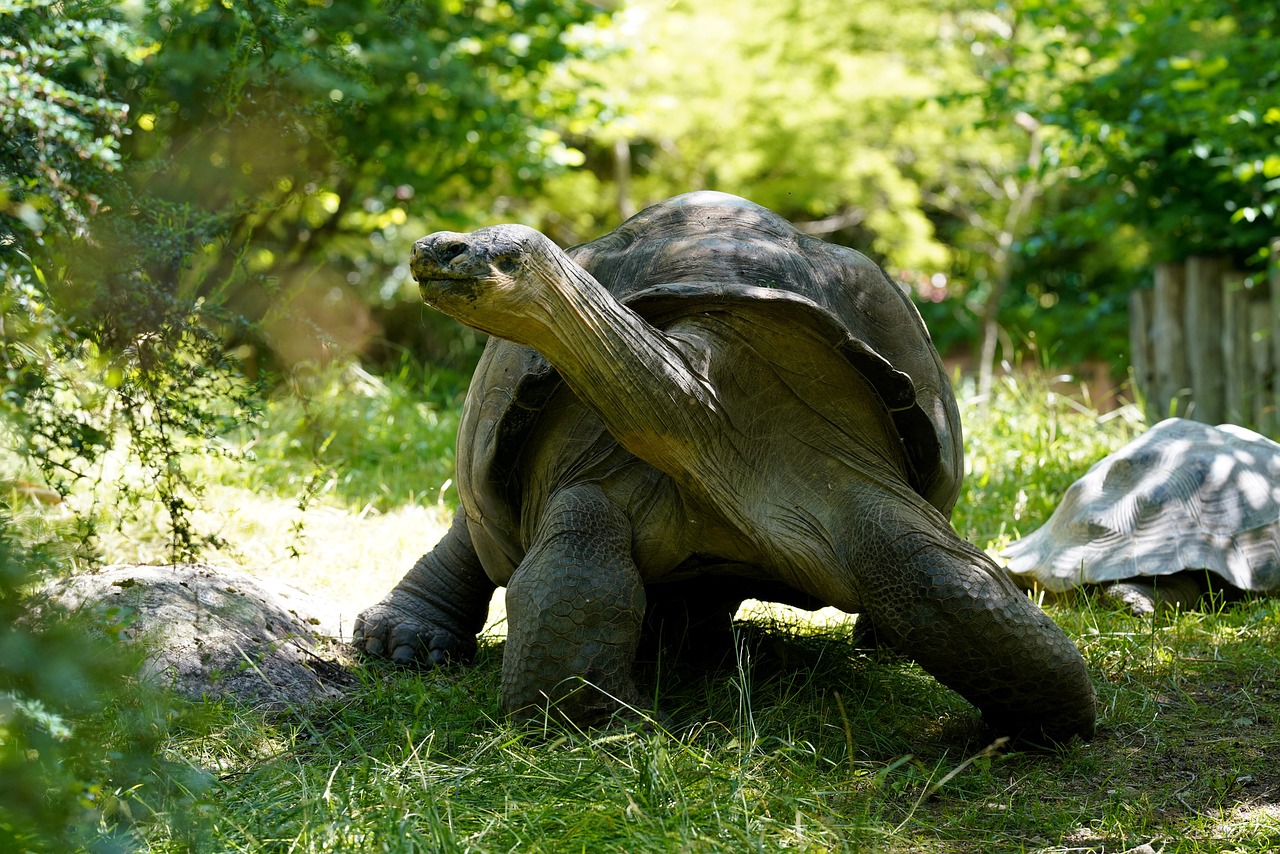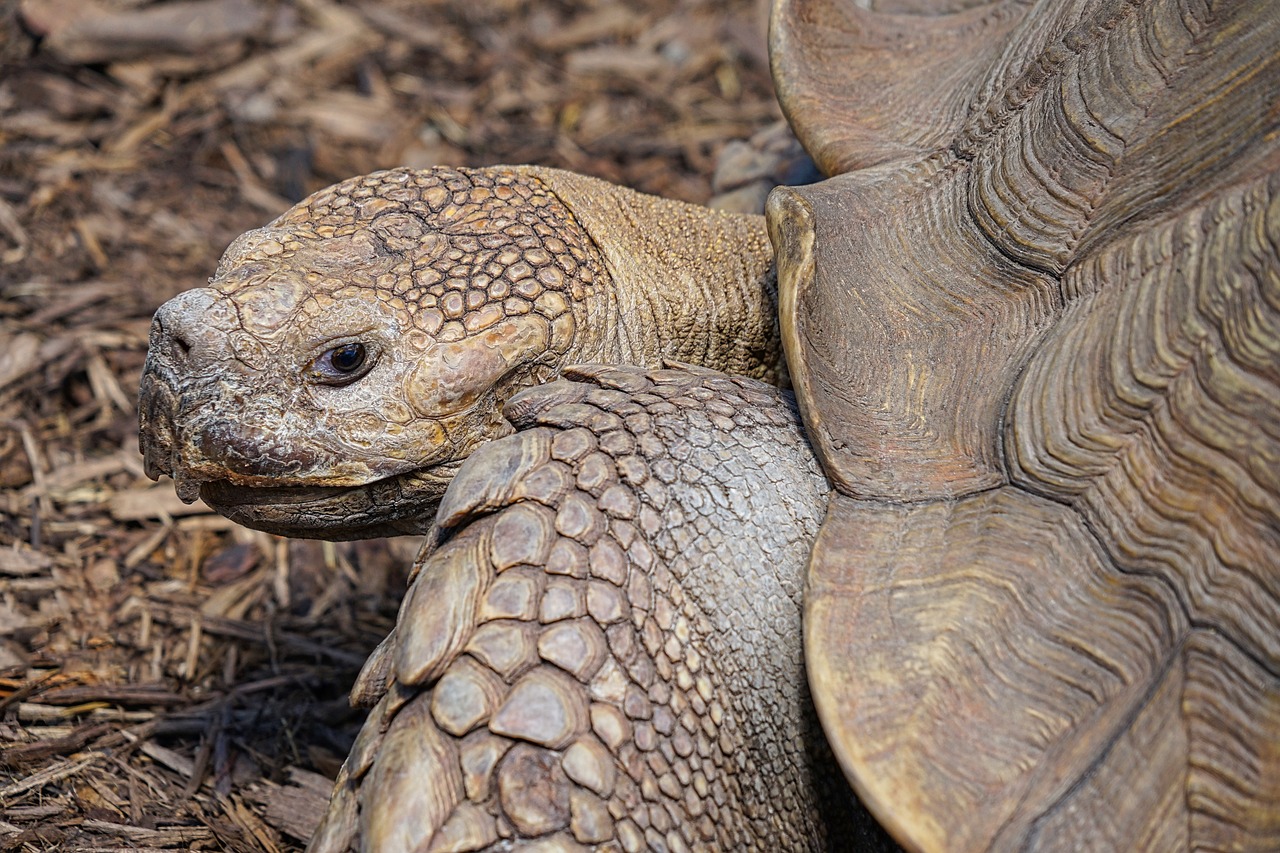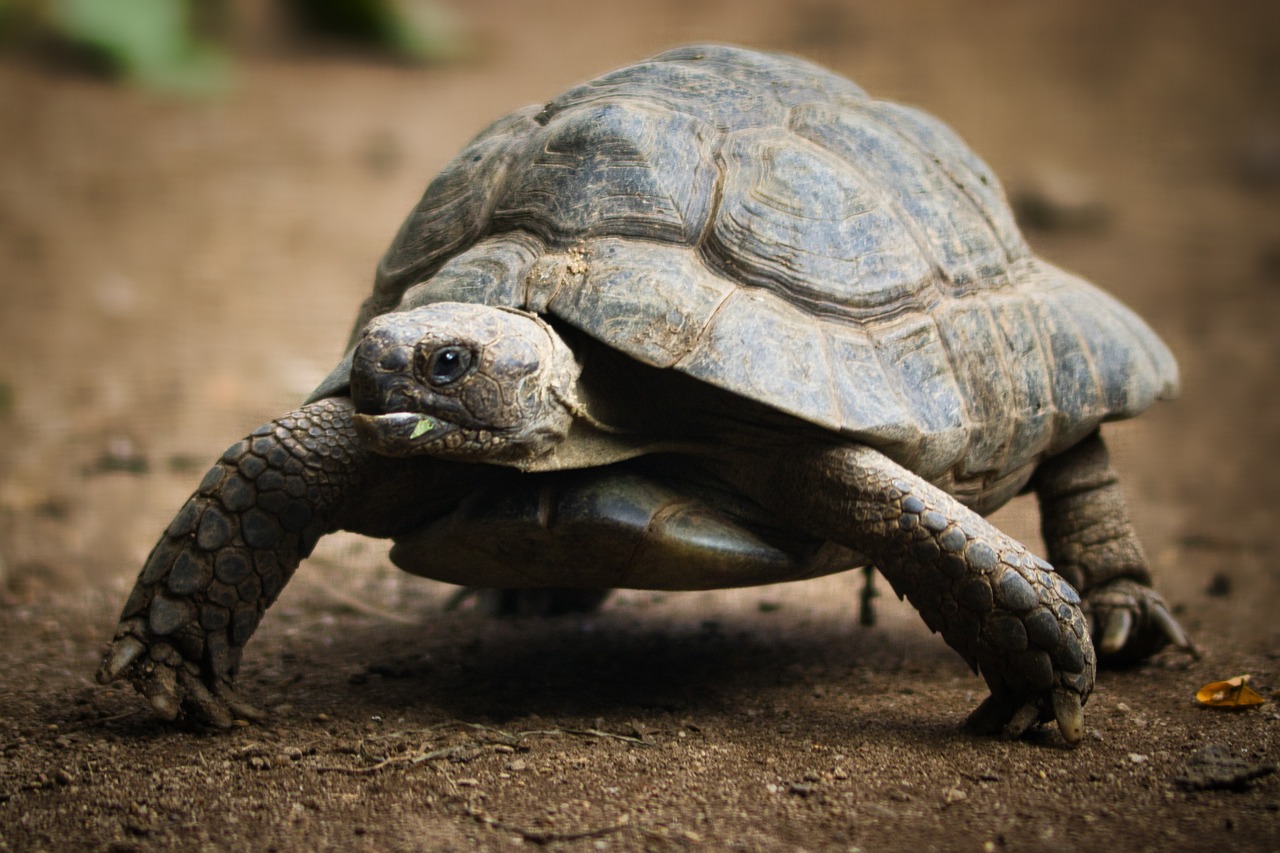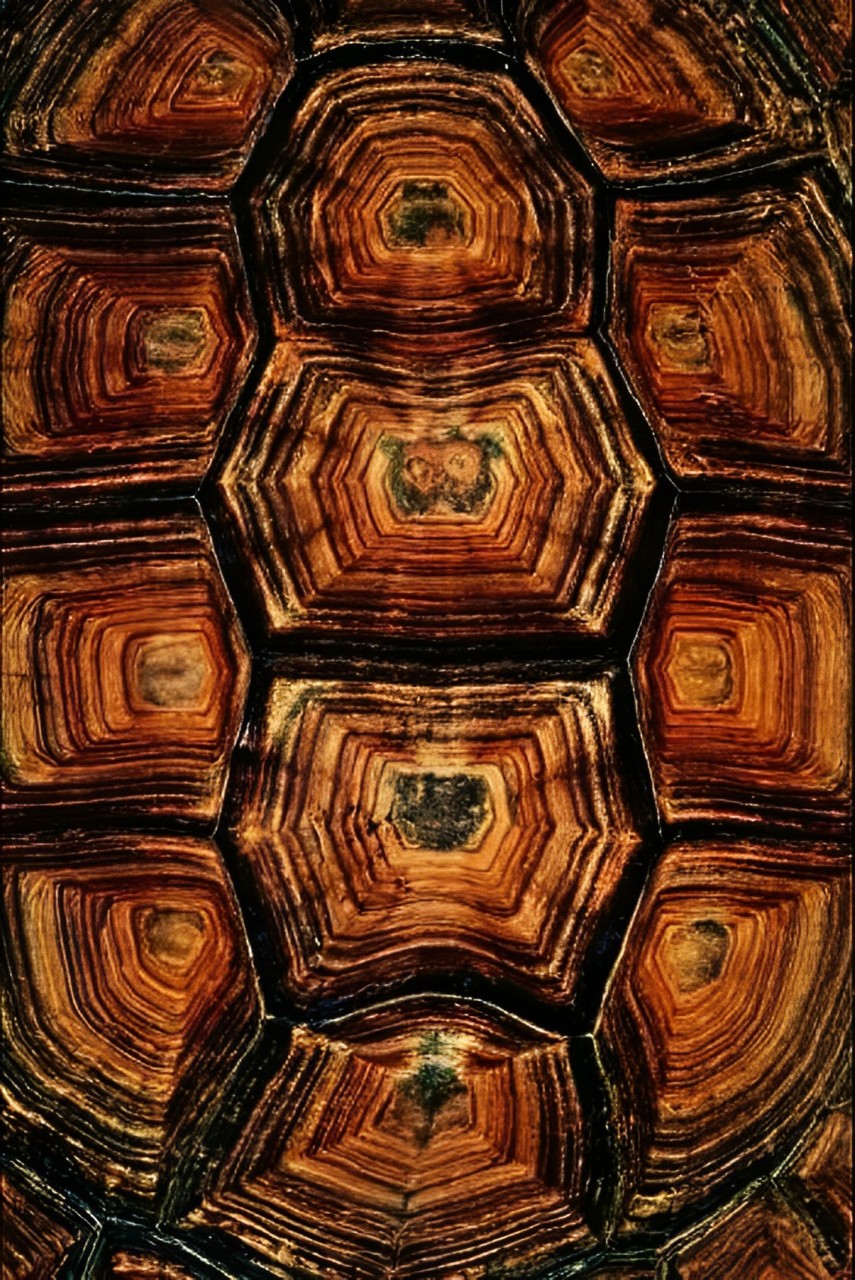Tortoise
African Spurred Tortoise
Class : Reptilia (Reptiles)
Scientific Name : Geochelone sulcata
FAMILY : Testudinidae
SPECIES : sulcata
GENUS : Geochelone
ORDER : Testudines
About
Living in a shell!!
The African spurred tortoise is the largest mainland tortoise, easily reaching 30 inches (76 centimeters) in length and well over 100 pounds (45 kilograms) in heft. Some males even reach 200 pounds (90 kilograms)! It is surpassed only by the island dweller tortoises from Aldabra and Galápagos.
Turtles and tortoises are a very old group of reptiles, going back about 220 million years. Of all wildlife with backbones, turtles and tortoises are the only ones that also have a shell, made up of 59 to 61 bones covered by plates called scutes, which are made of keratin like our fingernails. They cannot crawl out of it because the shell is permanently attached to the spine and the rib cage. The shell’s top is called the carapace, and the bottom is the plastron. They can feel pressure and pain through their shells, just as you can feel pressure through your fingernails.
Threats
The African Spurred Tortoise faces significant threats from habitat loss due to agricultural expansion, urbanization, and deforestation, which severely impact their natural environments. Overgrazing by livestock competes with the tortoises for food resources, exacerbating the strain on their habitat. Additionally, these tortoises are at risk from illegal pet trade and poaching for their meat and shells, further reducing their wild populations. Climate change also poses a challenge by altering their natural habitat and affecting food availability, leading to difficulties in finding adequate nourishment and suitable nesting sites. Conservation efforts are crucial to protect this species and its habitat from further decline.
Conservation Action
At Al Ain Zoo, we are dedicated to the conservation of the African Spurred Tortoise through our comprehensive and innovative programs. Our efforts focus on breeding, habitat restoration, and public education to ensure the survival of this species. We have established specialized facilities to create optimal breeding conditions and have successfully bred numerous tortoises, contributing to the stabilization of their population.
Life Span
80 to 100 years
Young
Number of eggs : 15 to 30 per clutch
Gestation : About 60 days
Incubation: Underground for about 8 months
Size at hatch : About 2 inches (5 centimeters); growth slows after 10 years
Age of maturity : About 15 years old
Size
Length : Males about 30 inches (76 centimeters) long ; Females about 20 inches (50 centimeters) long
Weight : Males up to 200 pounds (90 kilograms) ; Females up to 90 pounds (40 kilograms)
Fun Facts
The name “sulcata” is a Latin word for “furrow,” which are found on the tortoise’s back between each scute.
This tortoise can go weeks without food or water, and when it finds a water source it can drink up to 15 percent of its body weight!
These reptiles find relief from the desert heat by digging burrows up to 10 feet deep.
GALLERY




